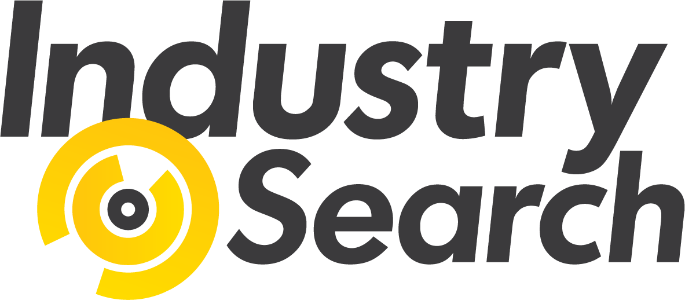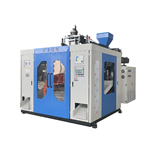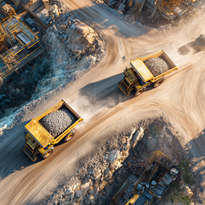Looking to finance heavy mining equipment in Australia? This comprehensive guide covers loans, leases, tax benefits, and custom financing solutions designed for large-scale mining machinery. Stay ahead with expert tips and up-to-date lender insights.
Key takeaways
- Mining equipment loans commonly range from $500,000 to $10 million+ for large-scale assets like draglines, dozers, excavators, and dump trucks.
- Loan terms typically span 3–7 years, with longer terms possible for high-residual-value equipment or tailored packages.
- Residual value-based financing can reduce monthly repayments by up to 30%, improving cash flow during slower production cycles.
- LVRs (Loan-to-Value Ratios) applied by major Australian lenders in 2025 range from 70–90%, depending on asset type, condition, and secondary market demand.
- Customised mining finance packages now include seasonal repayment options and operational performance-based triggers to align with commodity cycles.
- Low-doc mining equipment loans are available up to $1.5 million for established operators with strong asset backing.
- Instant asset write-off and temporary full expensing (TFE) have been extended in various forms for eligible Australian mining businesses, offering strong tax offsets.
Introduction
Financing large-scale mining machinery in Australia requires a deep understanding of both the equipment being acquired and the lending market that supports these purchases. Whether you're upgrading a fleet or scaling operations in response to resource demand, securing the right finance package can be the difference between operational efficiency and financial strain.
In this guide, we explore how Australian operators can navigate mining machinery finance strategically—covering the types of loans available, what lenders look for, tax benefits, repayment structures, and how to tailor finance around the mining sector’s cyclical nature. With mining capital expenditure in Australia reaching over $40 billion in 2024 (ABS, 2025), securing competitive finance terms is more important than ever.
Understanding the types of mining machinery being financed
Large-scale mining operations rely on a fleet of expensive and durable machinery. Common financed assets include:
- Excavators & Draglines – Often exceeding $1 million per unit.
- Haul Trucks – Ultra-class dump trucks can cost $3 million–$5 million each.
- Dozers, Loaders & Graders – Mid-range machinery often sits between $250,000–$900,000.
- Crushing & Screening Equipment – Key for ore processing; prices range from $100,000 to $2 million.
- Drilling Equipment – Surface drills often cost $500,000+, depending on specification.
- Conveyors and Bulk Handling Systems – Complex installations with equipment packages valued between $1 million–$10 million.
Key finance options for mining equipment in Australia
Chattel mortgage
- Most common option for asset-backed equipment finance.
- Borrower owns the asset from day one.
- Interest and depreciation may be tax-deductible.
Finance lease
- Equipment is leased from the lender.
- Option to purchase at the end of term.
- Suitable when preserving working capital.
Operating lease
- Off-balance sheet arrangement.
- Equipment returned at end of lease.
- Ideal for temporary projects or fast-depreciating assets.
Hire purchase
- Installment-based purchase structure.
- Full ownership transfers after final payment.
Lender considerations: What banks and non-bank lenders evaluate
Asset-specific risk
- Residual value: Key for lenders—equipment with strong resale demand attracts better terms.
- Condition and age: New or low-hour assets allow higher LVRs and lower interest rates.
Borrower profile
- Business tenure: Typically, lenders favour operations trading for 2+ years.
- Balance sheet strength: Strong asset base and liquidity improves finance access.
- Project contracts: Secured mining contracts enhance lender confidence.
LVR (Loan-to-Value Ratio)
- New machinery: 80–90%
- Used equipment: 60–80%, depending on hours and resale track record.
Residual or balloon payments
- Enables lower monthly repayments.
- Particularly useful for aligning finance with mining output cycles.
Mining-specific finance partners
- Many lenders now offer customised products for the resources sector.
- Includes seasonal payments and skip-payment options during downtimes.
Structuring repayments to match mining operations
Seasonal repayment structures
- Ideal for commodities like coal, iron ore, and lithium with cyclical output.
- Larger repayments during peak seasons; lower during slow quarters.
Performance-based triggers
- Some lenders offer adaptive repayment schedules based on:
- Commodity price indexes
- Output volumes
- Site performance metrics
Balloon structures
- Up to 40% of the loan value deferred to the end of term.
- Reduces monthly outgoings and helps with short-term cash flow.
Tax advantages and depreciation strategies
Temporary Full Expensing (TFE)
- Eligible businesses can deduct the full cost of eligible new or used equipment.
- Applies to machinery acquired and installed before end of financial year (check ATO updates).
Instant asset write-off
- Thresholds vary annually—currently applies up to $20,000 for SMEs (2025 policy pending).
- Larger machinery may not qualify but subcomponents or upgrades might.
GST credits
- Claimable on financed equipment purchased via chattel mortgage or hire purchase.
Residual value and secondary market demand
Residual value impacts:
- Monthly repayments
- Ability to refinance or resell
Importance of resale channels
- Auction networks and used equipment dealers influence valuation.
- Maintaining full service records improves resale value.
Customised finance for mining contractors vs owner-operators
Mining contractors:
- Typically require fleet finance for multiple machines.
- Lenders offer package deals with master agreements.
Owner-operators:
- May need funding for a single major asset.
- Low-doc finance options available up to $1.5 million.
- Personal guarantees may be required.
Common mistakes to avoid
- Ignoring residual values – Can result in inflated repayments.
- Not matching repayments to project cash flow – Causes liquidity strain.
- Overlooking insurance bundling – Finance providers often offer better rates.
- Using personal credit – Business-purpose loans provide more protection and tax advantages.
FAQs: Financing large-scale mining machinery in Australia
1. Can I finance used mining equipment in Australia?
Yes. Most lenders will finance used machinery, though terms vary. Expect:
- Lower LVR (typically 60–75%)
- Shorter loan terms (3–5 years)
- Need for full inspection and valuation
2. What is the typical interest rate for mining equipment loans?
As of mid-2025, rates range from 7.2% to 11.5%, depending on asset type, loan term, and borrower profile. High-value or well-maintained machinery attracts lower rates.
3. Are there finance products for mining startups?
Yes, though limited. Options include:
- Low-doc loans up to $1.5 million
- Equipment leases where asset secures loan
- Additional security may be required (property, director guarantees)
4. How do seasonal repayments work in mining finance?
Repayments are structured to reflect operational seasonality. For example:
- Lower payments in Q1–Q2 if downtime is expected
- Larger instalments in peak output periods
5. Is refinancing available for existing mining equipment loans?
Yes. Refinancing can:
- Lower interest costs
- Consolidate debt across multiple assets
- Adjust repayment schedules based on current market conditions
6. Can I bundle insurance and servicing into the loan?
Yes. Many lenders offer:
- Equipment protection insurance
- Scheduled maintenance coverage
- These can be included in the financed amount
Final thoughts
Mining machinery is capital-intensive—but with tailored finance, Australian operators can unlock growth, stay ahead of the commodity cycle, and preserve working capital. From chattel mortgages to customised leasing arrangements, aligning finance with the realities of mining operations is essential. Be proactive, work with mining-experienced lenders, and assess every loan feature through the lens of operational return and residual value.
For maximum impact, consider partnering with finance brokers who understand the mining sector. Their insight often means better rates, faster approval, and smarter structures.













